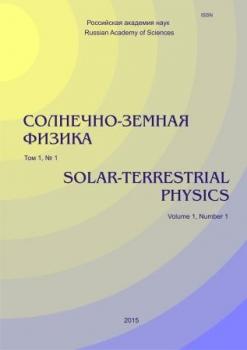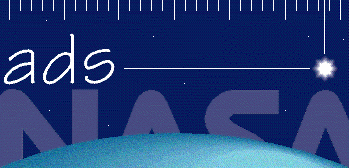Irkutsk State University
Irkutsk, Russian Federation
Irkutsk, Russian Federation
Irkutsk, Russian Federation
We analyze features of current solar activity cycle 25 for the first three years of its development (2020–2022). Compared to cycle 24, the current cycle is shown to exceed the previous one in the number of sunspot groups (1.5 times), the number of flares (1.8 times), and the total flare index (1.5 times). We have found that distributions of sunspot groups during cycles 24 and 25 differ in maximum area. Solar cycle 25, unlike cycle 24, exhibits the most significant increase in the number of sunspot groups with areas up to 30 pmh and in the interval from 570 to 1000 pmh. In contrast to cycle 24, the degree of north-south asymmetry in cycle 25 is significantly reduced. This allows us to predict an increased height of cycle 25, as compared to cycle 24 (by 20–50 %), in accordance with the Gnevyshev—Ol rule, as well as the possible unimodal nature of the cycle.
solar activity cycle, sunspots, solar flares, north-south asymmetry
1. Belian R.D., Gisler G.R., Cayton T.E., Christensen R.A. High-Z energetic particles at geosynchronous orbit during the great solar proton event series of October 1989. J. Geophys. Res. 1992, vol. 97, p.16897.
2. Borrini G., Wilcox J.M., Gosling J.T., Bame S.J., Feldman W.C. Solar wind helium and hydrogen structure near the heliospheric current sheet; a signal of coronal streamer at 1 AU. J. Geophys. Res. 1981, vol. 86, p. 4565.
3. Borodkova N.L. The impact of large and abrupt changes in the dynamic pressure of wind energy on the Earth’s magnetosphere. Analysis of several events. Cosmic Research. 2010, vol. 48, no. 1, pp. 1-15.
4. Chen J., Fritz T.A., Sheldon R.B., Spence H.E., Spjeldvik W.N., Fennell J.F., Livi S., et al. Cusp energetic particle events: Implications for a major acceleration region of the magnetosphere. J. Geophys. Res. 1998, vol. 103, iss. A1, pp. 69-78. DOI:https://doi.org/10.1029/97JA02246.
5. Dmitriev A.V., Suvorova A.V. Atmospheric effects of magnetosheath jets. Atmosphere. 2023, vol. 14, no. 45, pp.1-15. DOI:https://doi.org/10.3390/atmos14010045.
6. Echim M.M., Lemaire J.F. Laboratory and numerical simulations of the impulsive penetration mechanism. Space Sci. Rev. 2000, vol. 92, pp. 566-601.
7. Eselevich V.G. Diamagnetic structure as a basic of quasi-stationary slow solar wind. Solar-Terr. Phys. 2019, vol. 5, iss. 3, pp. 29-41. DOI:https://doi.org/10.12737/stp-53201904.
8. Eselevich M.V., Eselevich V.G., Some features of the streamer belt in the solar corona and at the Earth’s orbit. Astron. Rep. 2006a, vol. 50, no. 9, pp.748-761.
9. Eselevich M.V., Eselevich V.G. Manifestations of the ray structure of the coronal streamer belt in the form of sharp peaks of the solar wind plasma density in the Earth’s orbit. Geomagnetism and Aeronomy. 2006b, vol. 46, iss. 6, pp.770-782.
10. Eselevich M.V., Eselevich V.G. The double structure of the coronal streamer belt. Solar Phys. 2006c, vol. 235, iss. 1-2, pp. 331-344.
11. Gosling J.T., Asbridge J.R., Bame S.J., Paschmann G., Sckopke N. Observation of two distinct population of bow shock ions in the upstream solar wind. Geophys. Res. Lett. 1978, vol. 5, pp. 957-960.
12. Guglielmi A.V., Potapov A.S. Frequency-modulated ultra-low-frequency wave in near-Earth space. Physics-Uspekhi. 2021, vol. 64, iss. 5, pp. 452-467. DOI:https://doi.org/10.3367/UFNe. 2020.06.038777.
13. Kangas J., Guglielmi A., Pokhotelov O. Morphology and physics of short-period magnetic pulsations (A review). Space Sci. Rev. 1998, vol. 83, pp. 435-512. DOI:https://doi.org/10.1023/A:1005 063911643.
14. Molchanov O.A. Nizkochastotnye volny i indutsirovannye izlucheniya v okolozemnoi plazme [Low-frequency waves and induced radiation in near-Earth plasma]. Moscow, Nauka Publ., 1985, 223 p. (In Russian).
15. Parkhomov V.A., Borodkova N.L., Eselevich V.G., Eselevich M.V., Dmitriev A.V., Chilikin V.E. Peculiarities of the influence of the diamagnetic structure of the solar wind on Earth’s magnetosphere. Solar-Terr. Phys. 2017, vol. 3, iss. 4, pp. 44-57. DOI:https://doi.org/10.12737/stp-34201705.
16. Parkhomov V.A., Borodkova N.L., Eselevich V.G., Eselevich M.V., Dmitriev A.V., Chilikin V.E. Solar wind diamagnetic structures as a source of substorm-like disturbances. J. Atmos. Solar-Terr. Phys. 2018, vol. 181, pp. 55-67. DOI:https://doi.org/10.1016/j.jastp.2018.10.010.
17. Parkhomov V.A., Eselevich V.G., Eselevich M.V., Dmitriev A.V., Suvorova A.V., Khomutov S.Yu., Tsegmed B., Tero Raita. Magnetospheric response to the interaction with the sporadic solar wind diamagnetic structure. Solar-Terr. Phys. 2021, vol. 7, iss. 3, pp. 11-28. DOI:https://doi.org/10.12737/stp-73202102.
18. Parkhomov V.A., Eselevich V.G., Eselevich M.V. Geoeffectiveness of the eruptive prominence. System Analysis & Mathematical Modeling. 2022, vol. 4, iss. 2, pp. 123-151.
19. Russell C.T., Wang Y.L., Raeder J., Tokar C.T., Smith C.W., Ogilivie K.W., Lazarus A.J., Lepping R.P., et al. The interplanetary shock of September 24, 1998: Arrival to Earth. J. Geophys. Res. 2000, vol. 105, iss. A11, pp. 25143-25154. DOI:https://doi.org/10.1029/2000JA900070.
20. Sapunova O.V., Borodkova N.L., Zastenker G.N., Yermolaev Y.I. Behavior of He++ ions at interplanetary shocks. Geomagnetism and Aeronomy. 2020, vol. 60, iss. 6, pp. 708-713. DOI:https://doi.org/10.1134/S0016793220060122.
21. Sapunova O.V., Borodkova N.L., Zastenker G.N., Yermolaev Y.I. Dynamics of He++ ions at interplanetary and Earth’s bow shocks. Universe. 2022, vol. 8, 516. DOI: 10.3390/ universe8100516.
22. Scholer M. Diffusions at quasi-parallel collisionless shocks: Simulations. Geophys. Res. Lett. 1990, vol. 17, pp. 1821-1824.
23. Scholer M., Terasawa T. Ion reflection and dissipation at quasiparallel collisionless shocks. Geophys. Res. Lett. 1990, vol. 17, pp. 119-122.
24. Trattner K.J., Scholer M. Diffuse alpha particles upstream of simulated quasi-parallel supercritical collisionless shocks. Geophys. Res. Lett. 1991, vol. 18, no. 10. pp. 1817-1820.
25. Tsegmed B., Potapov A., Baatar N. Daytime geomagnetic pulsations accompanying sudden impulse of solar wind. Proceedings of the Mongolian Academy of Sciences. 2022, vol. 62, no. 02, 242. DOI:https://doi.org/10.5564/pmas.v62i02.2380.
26. Tsurutani B.T., Smith E.J., Anderson R.R., Ogilvie K.W., Scudder J.D., Baker D.N., Bame S.J. Lion roars and nonoscillatory drift mirror waves in the magnetosheath. J. Geophys Res. 1982, vol. 87, iss. A8, 6060. DOI:https://doi.org/10.1029/JA087iA08p06060.
27. Turner J.M., Burlaga L.F., Ness N.F., Lermaire J.F. Magnetic holes in the solar wind. J. Geophys. Res. 1977, vol. 82, no. 13, pp. 1921-1924.
28. Veselovsky I.S., Yermolaev Yu.I. Ionic components of the solar wind. Plasma Heliogeophysics. Vol. 1. Moscow, Fizmatlit Publ., 2008, pp. 313- 325.
29. Yermolaev Y.I., Lodkina I.G., Khokhlachev A.A., Yermolaev M.Y., Riazantseva M.O., Rakhmanova L.S., et al. Drop of solar wind at the end of the 20th century. J. Geophys. Res.: Space Phys. 2021, vol. 126, JA029618. DOI:https://doi.org/10.1029/2021JA029618.
30. Zhou X.-Y., Tsurutani B.T. Rapid intensification and propagation of the dayside aurora: Large-scale interplanetary pressure pulses (fast shocks). Geophys. Res. Lett. 1999, vol. 26, pp. 1097. DOI:https://doi.org/10.1029/1999GL900173.
31. URL: http://wso.stanford.edu/ (date of access April 19, 2023).
32. URL: http://ckp-rf.ru/ckp/3056/ (date of access March 15, 2023).
33. URL: https://www.obsebre.es/en/rapi (date of access March 15, 2023)
34. URL: https://imag-data.bgs.ac.uk/GIN_V1/GINForms2 (date of access April 12, 2023).
35. URL: https://cdaweb.gsfc.nasa.gov/cdaweb/istp_public/ (date of access February 12, 2023).


















